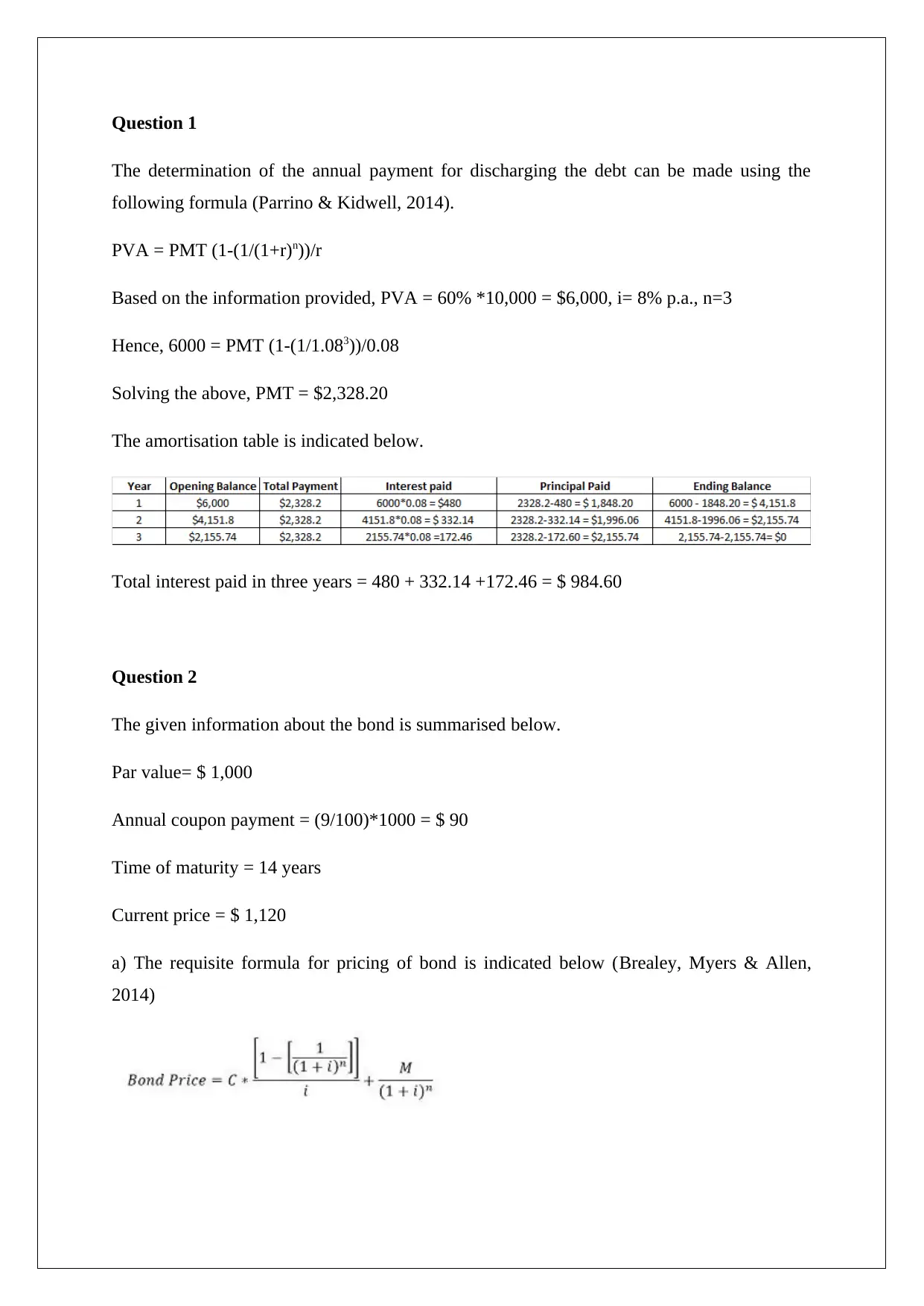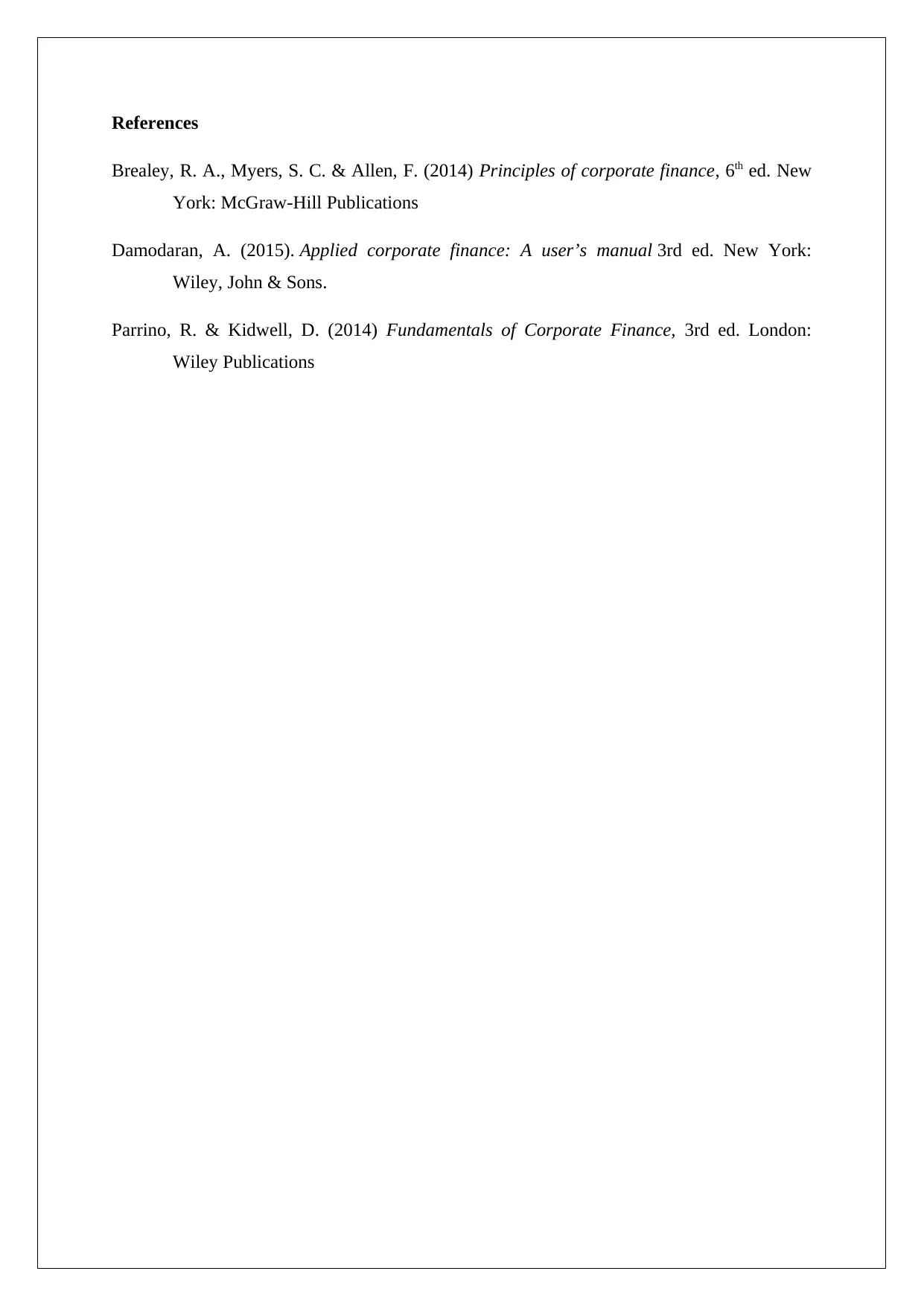Principle of Banking & Finance: Debt Discharge & Bond Pricing
VerifiedAdded on 2023/05/28
|4
|535
|391
Homework Assignment
AI Summary
This assignment solution focuses on the principles of banking and finance, specifically addressing debt discharge and bond pricing. It calculates the annual payment required to discharge a debt of $6,000 over three years at an 8% interest rate, determining the payment to be $2,328.20 and providing an amortization table with a total interest paid of $984.60. Furthermore, the assignment analyzes a bond with a par value of $1,000, a 9% annual coupon, and 14 years to maturity, currently priced at $1,120. It calculates the yield to maturity (YTM) to be 7.58% and determines that if an investor requires an 8.5% return, the bond should be priced at $1,040.05. The assignment concludes that the investor should not invest in the bond at its current price, as the YTM is lower than the required rate of return. The analysis is supported by relevant academic references.
1 out of 4







![[object Object]](/_next/static/media/star-bottom.7253800d.svg)